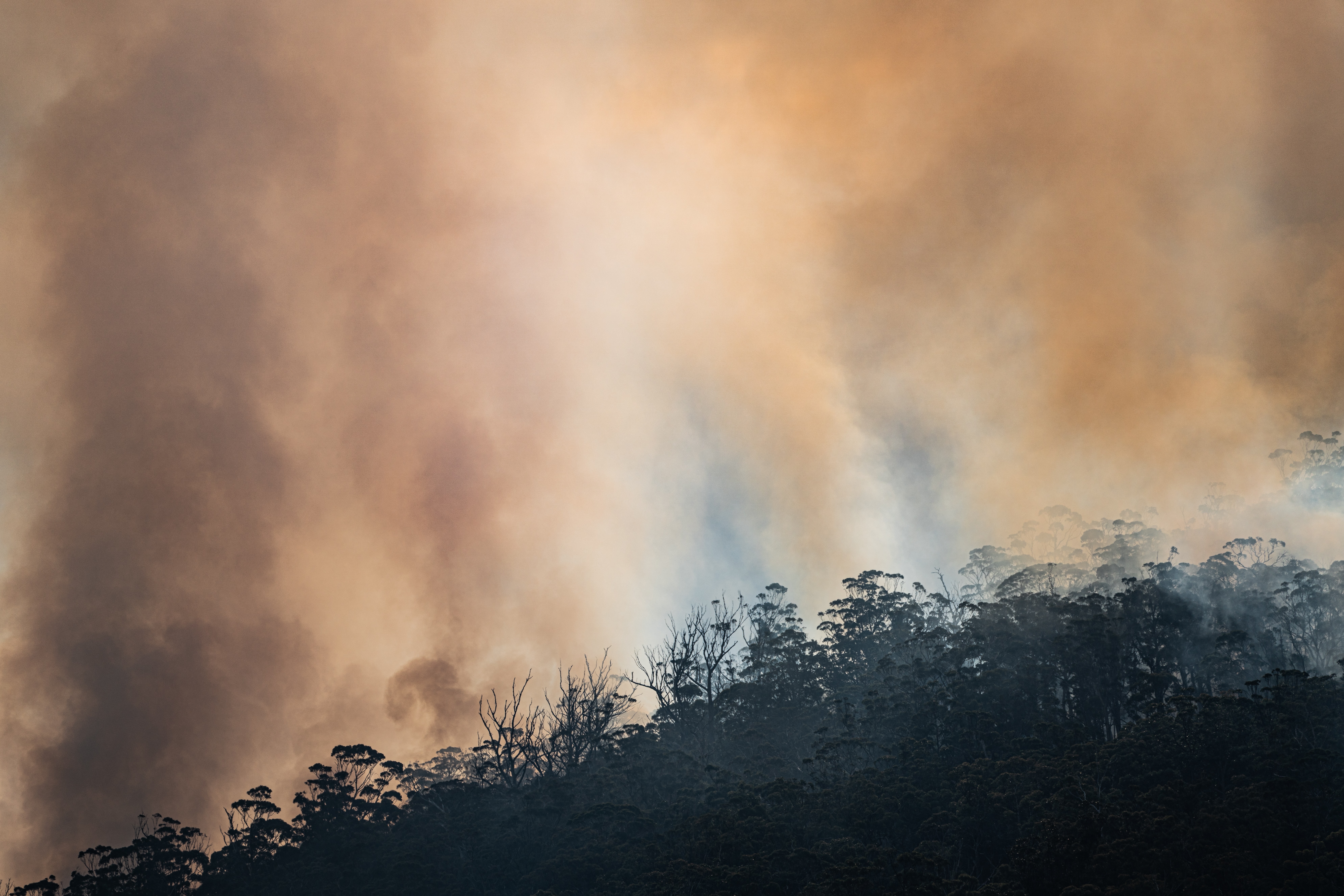Media release
From:
Wildfire smoke and stratospheric ozone
A study finds that smoke from Australian wildfires from 2019 to 2020 that reached the stratosphere reacted with atmospheric nitrogen, suggesting that stratospheric smoke may lead to ozone layer depletion. Wildfires in Australia during the austral summer of 2019-2020 produced large amounts of smoke that reached the stratosphere. Susan Solomon and colleagues used data from multiple satellites to compare concentrations of smoke and reactive nitrogen molecules, such as NO2, in the stratosphere. The measurements showed a relationship between increased aerosol surface area and decreased reactive nitrogen concentration, a marker of atmospheric chemical processes likely occurring on the surfaces of the aerosol particles. The authors note that the key process is the formation of HNO3 from N2O5, which is one of several processes that can contribute to ozone depletion. The authors suggest that an increase in the amount of wildfire smoke reaching the stratosphere may hinder the recovery of the ozone layer, which is estimated to recover by 1% per decade. According to the authors, modeling revealed that austral midlatitude ozone loss due to the smoke was around 1% in March 2020 alone.
Article #2021-17325: “On the stratospheric chemistry of mid-latitude wildfire smoke,” by Susan Solomon et al.
Expert Reaction
These comments have been collated by the Science Media Centre to provide a variety of expert perspectives on this issue. Feel free to use these quotes in your stories. Views expressed are the personal opinions of the experts named. They do not represent the views of the SMC or any other organisation unless specifically stated.
Professor Clare Murphy (Paton-Walsh) is Director of the Centre for Atmospheric Chemistry at the University of Wollongong
Some of the Black Summer fires were so intense that they injected smoke right up into the stratosphere. Earth observing satellites could see that as the aerosol loading increased (from the smoke intruding into the higher atmosphere) reactive nitrogen molecules decreased. This is an indicator of the ozone depletion chemistry that occurs on the surface of aerosols.
The authors calculated a total ozone loss of one per cent within the month of March 2020. This ozone loss is likely to be repeated during intense fire episodes and these are predicted to increase with climate change in the coming decades. This means that increased wildfire occurrence and intensity may act to slow down the recovery of the ozone layer.
It is important to note that the impact of this is in the mid-latitudes and not over the South Pole (the paper did not model any possible impact on the Antarctic ozone hole). Nevertheless, as a result of huge fire putting smoke into the stratosphere, the long-term overall stratospheric ozone recovery will be slowed by this chemistry. Any slowdown in the recovery of ozone in the mid-latitudes will increase the overall exposure to UV-radiation for Australians and hence may impact the occurrence of skin cancers in future.
Professor Ian Rae is an expert on chemicals in the environment from the School of Chemistry at the University of Melbourne. He was also an advisor to the United Nations Environment Programme on chemicals in the environment and is former President of the Royal Australian Chemical Institute
Research has confirmed an idea that arose after the 2020 bushfires in Australia, that smoke particles from the fires that rose into the stratosphere, could provide platforms for destruction of ozone molecules. The chemistry is extremely complex, with chemical reactions taking place not in the gas phase, but on the surfaces of particles. The 'predator chemicals' are nitrogen oxides that we are already familiar with as pollutants in the air we breathe. Now they have taken on a whole new role.
Shortly before the discovery in 1974 that the ozone layer was being damaged by chemical fragments from chlorofluorocarbons (CFCs), there was concern that smoke from supersonic aircraft could damage the ozone layer, and nitrogen oxides were in the gun then, too. The Australian Academy of Science investigated this and concluded that there would be no adverse effects from the number of supersonic aircraft expected to be flying by 1985. Other countries came to similar conclusions but not everybody believed it. Fortunately, perhaps, there were only 14 Concorde, they never brought passengers to Australia, and their reign was brief.
Just a reminder of what's going on up there. The concentration of ozone in the stratosphere is maintained by natural processes. Ozone molecules are formed and destroyed, and the two processes are in balance. Adding extra chemical substances to the mix can upset the balance and reduce the ozone concentration. Laboratory experiments suggest that many different chemical substances can upset this balance by reacting with ozone molecules, but fortunately most of these 'chemical predators' never get up into the stratosphere.
The impacts of the bushfire smoke are smaller than those the world experienced from the chlorofluorocarbons (CFCs) that were used in spray cans and refrigeration. These chemicals can survive destruction in the lower atmosphere and rise to the stratosphere where they break down. The resulting chlorine fragments can bring about destruction by reacting with ozone molecules on the surface of ice crystals. Restraints to the use of the CFCs, under the Montreal Protocol to the Vienna Convention on protection of the ozone layer, have helped to reduce these impacts and assist the ozone layer to recover.



 Australia; International; NSW; VIC
Australia; International; NSW; VIC



